
At the 2025 C-Store Foodservice Forum, Supper Co. co-founders Kyle Drenon and Kesha Alexander delivered a powerful message to operators and marketers: in a noisy, value-driven, digitally native world, the food has to be craveable. And not just good but, irresistible.
Here's a breakdown of the top takeaways and tactics from their session to help you rethink how you approach food, marketing, and menu strategy inside your stores.
In 2024, a third of operators continued to trim down menus, even after the pandemic-era cuts. Why? Because simplified menus aren’t just easier to operate.
They sell better.
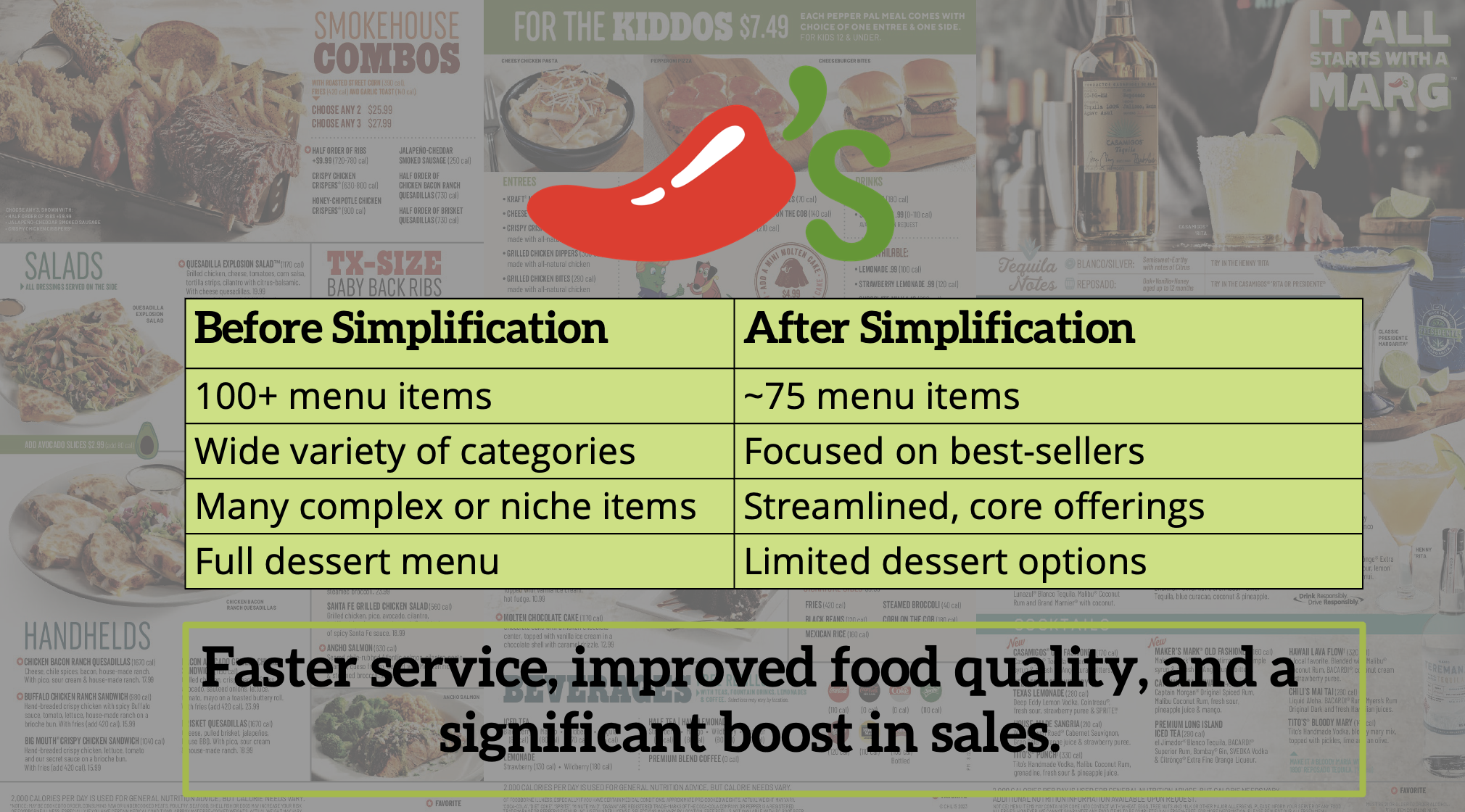
Simplification improves labor training, reduces inventory sprawl, and makes it easier for guests to order confidently. Chili’s saw this firsthand. By reducing their menu from over 100 items to around 75 and focusing on core categories, they not only streamlined operations but saw a notable improvement in speed and food quality, ultimately driving higher sales.
Bottom Line: clarity creates conversion. Make it easy for guests to know what they want, and they’ll buy more of it.
Consumer confidence has dropped to its lowest point in 12 years. Nearly half of operators reported lower traffic this spring, and 49% of consumers say they’re cooking at home more to save money.
But value doesn’t mean discounting everything. Guests don’t always need the lowest price. They nowneed a reason to feel good about their spend.
Chili’s "3 for Me" platform is a masterclass in this principle. It’s priced like a deal, but CEO Kevin Hochman made it clear:
“The ‘3 for Me’ platform is not a discount; it’s a trade-up mechanism.”
That entry-level value lured in cautious guests. But once seated, they added margaritas and the viral Nashville Hot Mozz. Triple Dipper sales spiked, growing by 70% and accounting for 11% of total sales. Same-store sales climbed 31% year-over-year.
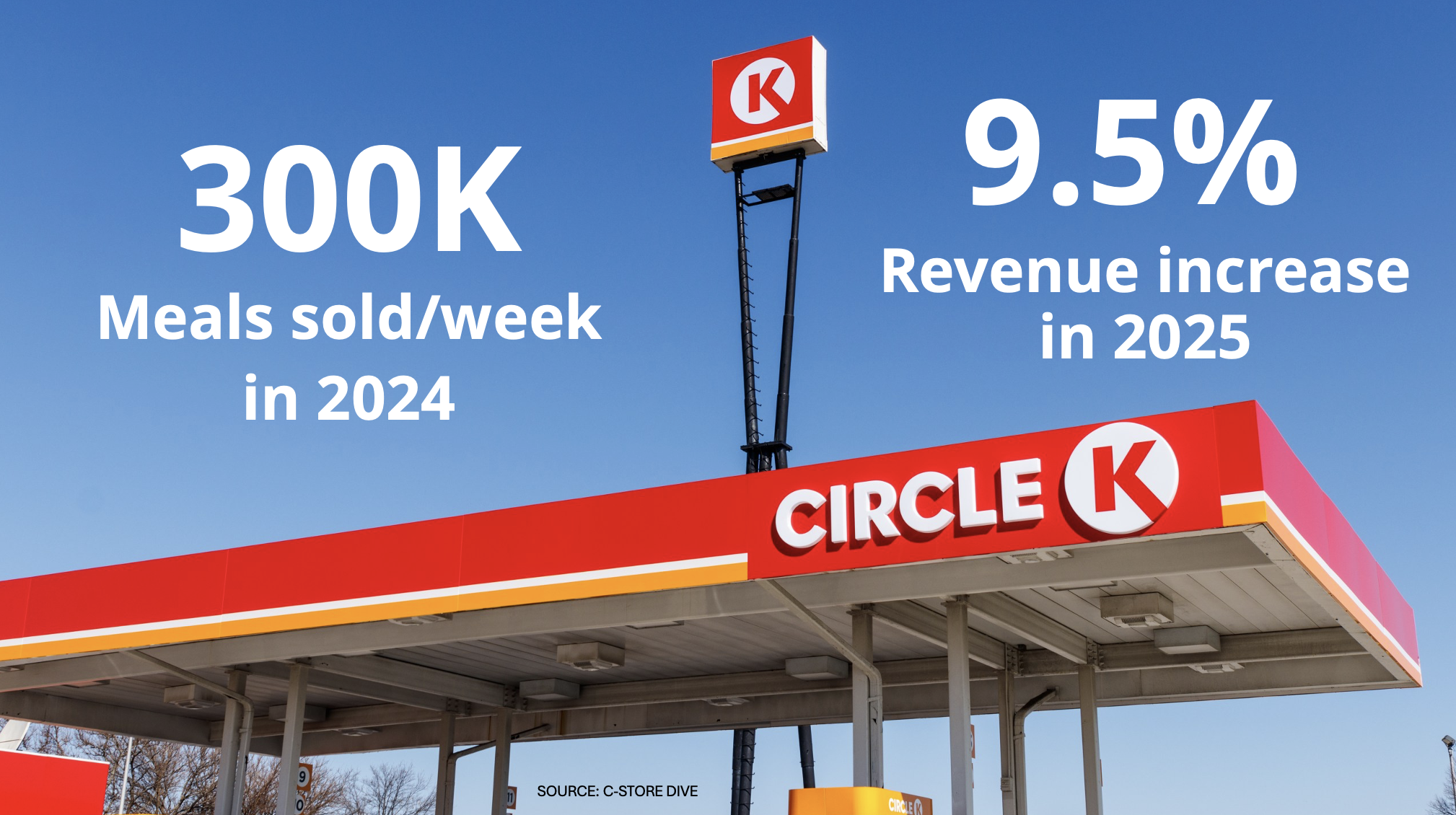
Circle K saw similar value-driven success with a straightforward pricing tier—$3, $4, $5—and consistent, craveable food. In 2024, they sold over 300,000 meals per week and posted a 9.5% foodservice revenue increase in 2025.
Bottom Line: perceived value brings guests in. Craveability makes them stay (and spend).
The average person now eats 2.6 snacks per day, and 60% say they prefer multiple smaller meals throughout the day.
This isn't a trend. It’s a shift in behavior.
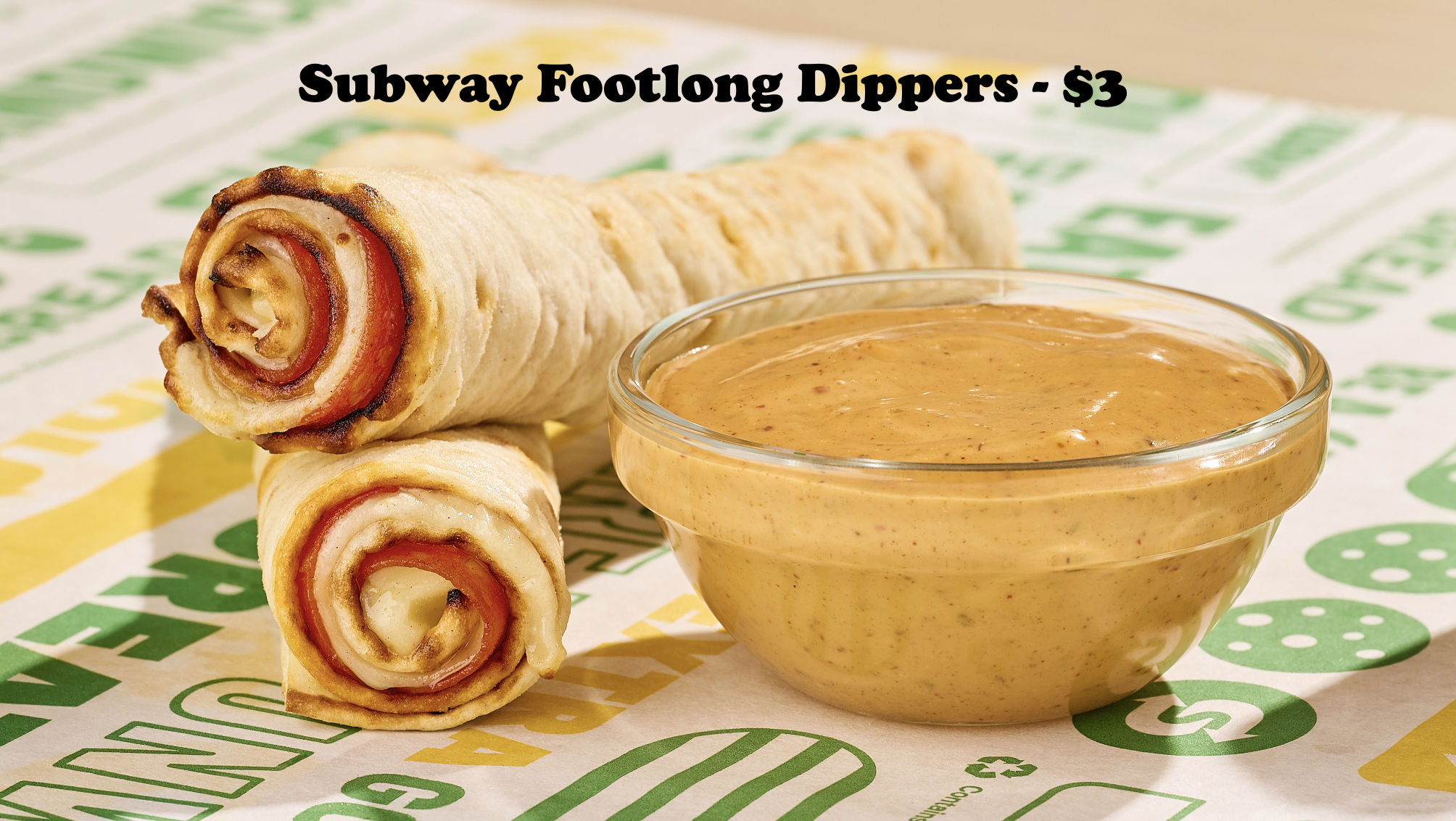
C-stores and QSRs are responding with affordable, snackable, grab-and-go options that punch above their weight in flavor and margin. Think Subway Footlong Dippers at $3. Taco Bell’s $3 Cravings Menu. Wendy’s new Saucy Nuggs at $2.49. And don’t forget Popeyes and McDonald’s battling it out in the Snack Wrap Wars this summer.
Bottom Line: If you’re not already in the snacking game, you’re missing a high-frequency, high-margin opportunity to grow traffic and basket size.
Limited-time offers aren’t just for short-term buzz anymore. They’re a vital tool for building brand preference and habitual visits. In fact, LTOs in c-store foodservice rose 75% in 2024 compared to 2023.
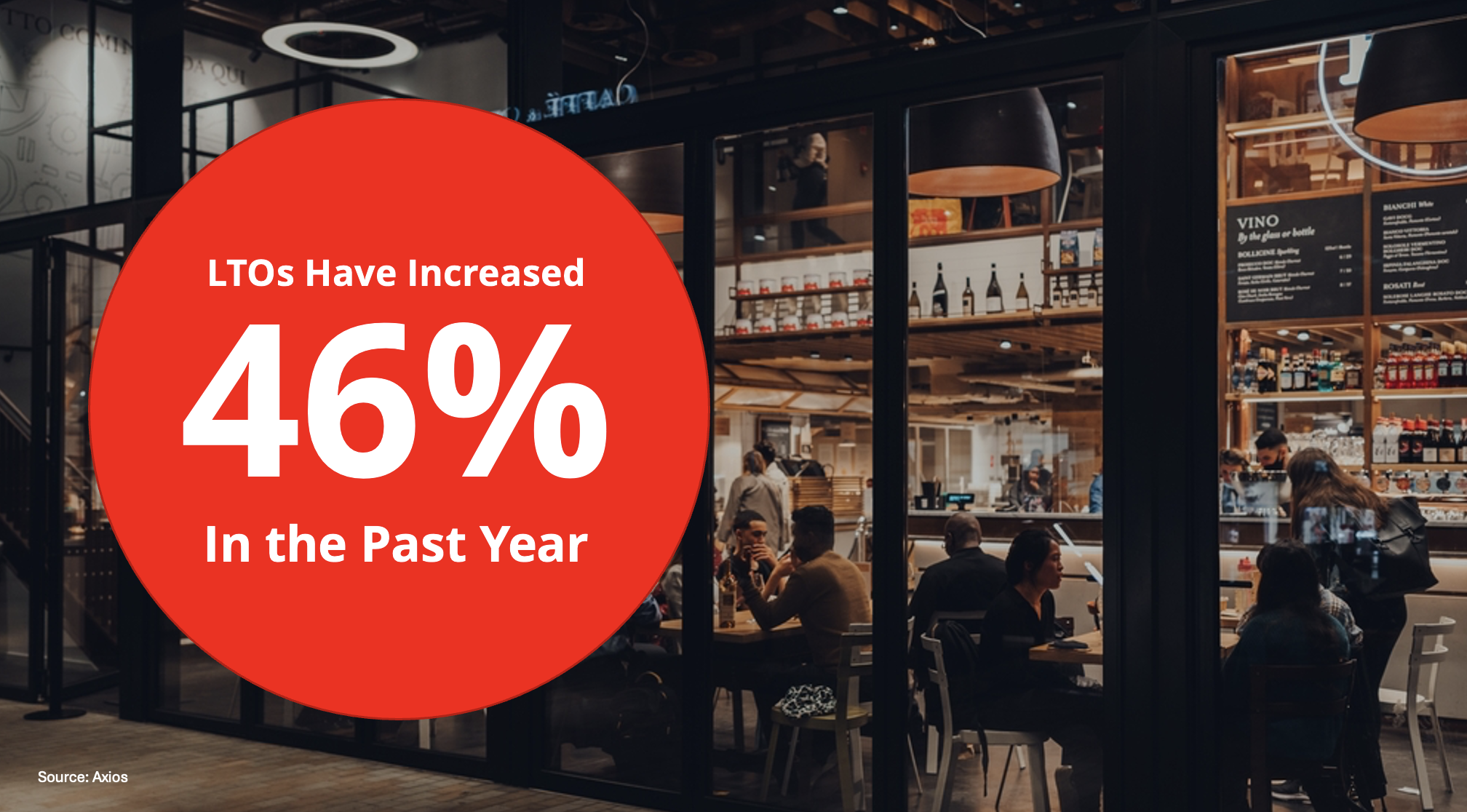
And they work. 91% of consumers say they’re more likely to visit an establishment offering new menu items. Brands like Jack in the Box, Weigel’s, and Big Whiskey’s are using LTO platforms, brand partnerships, and even NIL deals to stay top of mind and drive repeat visits.
Bottom Line: If everyone is doing LTOs, yours need to stand out and getting creative is the best way to make it happen.
If you're looking for growth, look no further than your beverage cooler. Gen Z orders 4.5 beverages per week from foodservice venues. Four of the 12 fastest-growing chains in the U.S. specialize in beverages, including Swig, Sonic, Dunkin’, and Panera.
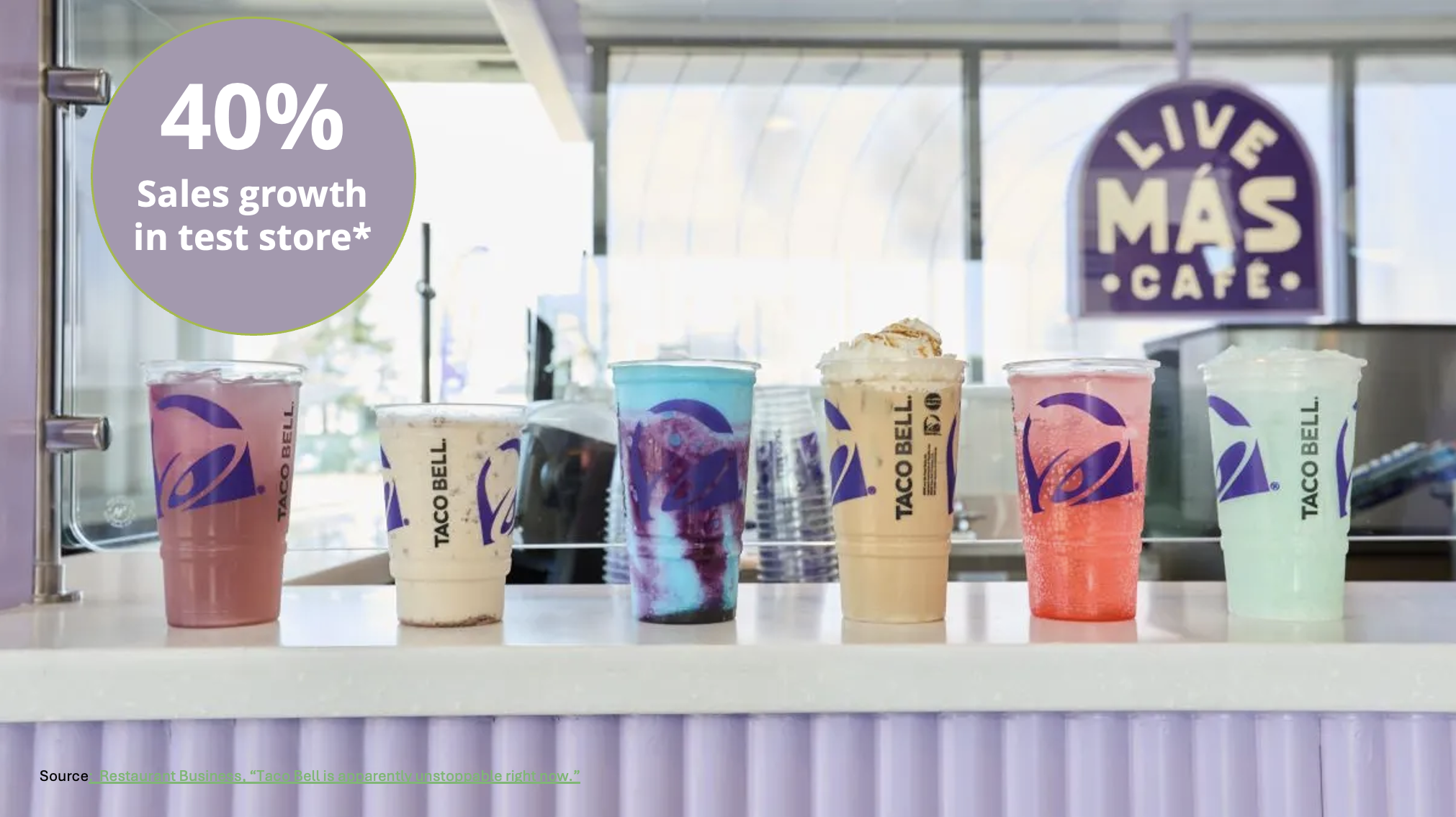
Drinks are now a form of expression, content, and daily ritual. TikTokers aren’t just buying sodas, they’re creating moments around them. This "drinktok" effect is why Taco bell is joining the beverage only concept game with Liv Mas Cafes. Their flagship store in Chula Vista California sells more than 300 beverages a day and they're expanding to more locations this year.
Bottom Line: C-stores can play in this space, too. Wawa’s layered rainbow drinks, Pepsi’s DRIPS, and Taco Bell’s cafe-inspired sips show how creative, social-friendly beverages can drive double-digit test-store sales increases.
Artificial intelligence isn’t coming.
it’s already changing how top brands operate.
Starbucks uses DeepBrew to analyze customer behavior and tailor promotions and product suggestions. This proprietary AI was launched in 2019 and helped Starbucks idnetify and prepare for the rise of cold beverages in 2021. The software predicted that cold beverages would surpass hot after decades of dominance and equipped Starbucks with the data they needed to capitalize. In 2021, they saw 9% same store sales growth when the trend took hold.
But you don’t need Starbucks money or a proprietary AI to apply this strategy in smart ways.
- Using a tool like Microsoft CoPilot or a closed-loop AI system, you can:
- Analyze sales data to identify seasonal patterns
- Forecast winning flavor combinations
- Generate ideas for LTOs based on past performance
- Optimize product copy and menu design
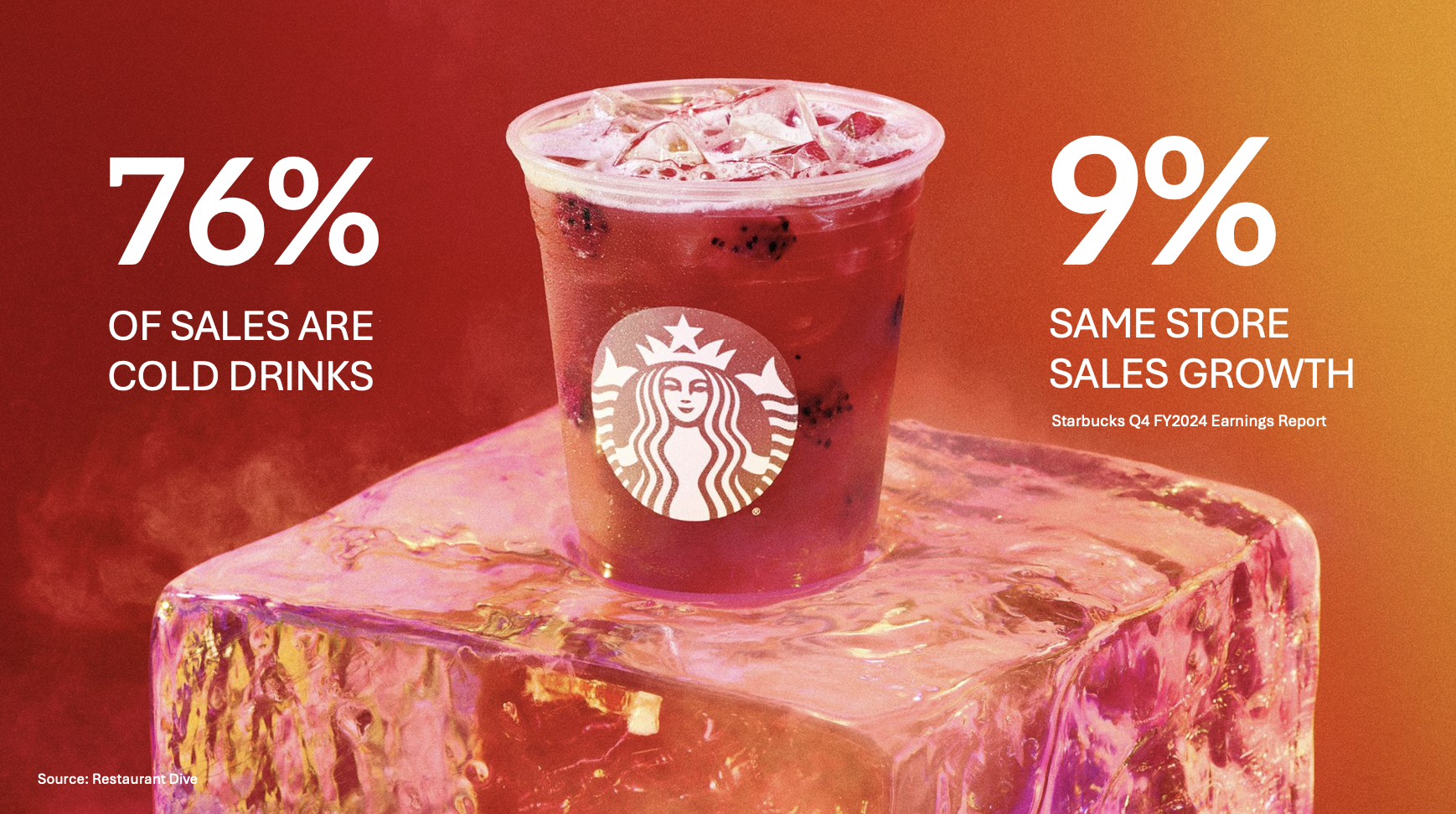
Bottom Line: use your own data to train the system. Let AI do the heavy lifting on trends and pairings so your team can focus on execution.
Google’s new AI Mode is changing how people find answers and food. Over 58% of Google searches no longer result in a click. Organic traffic is down 34%, and TikTok is now a search engine for 41% of consumers.
Google recently launched AI Mode in Google Search that even further prioritizes AI summaries over link-based results. These changes suggest organic traffic from search is going to continue to decline. Furthermore, it's nearly a black box at this point on what determines which brands show up in AI summaries.
With more limited space in search, brands will need to turn to other methods of creating branding opportunities and conversion points to drive sales in the new web. The good news is that social has been challenging organic search for years in being the primary source for digital discovery and conversion.
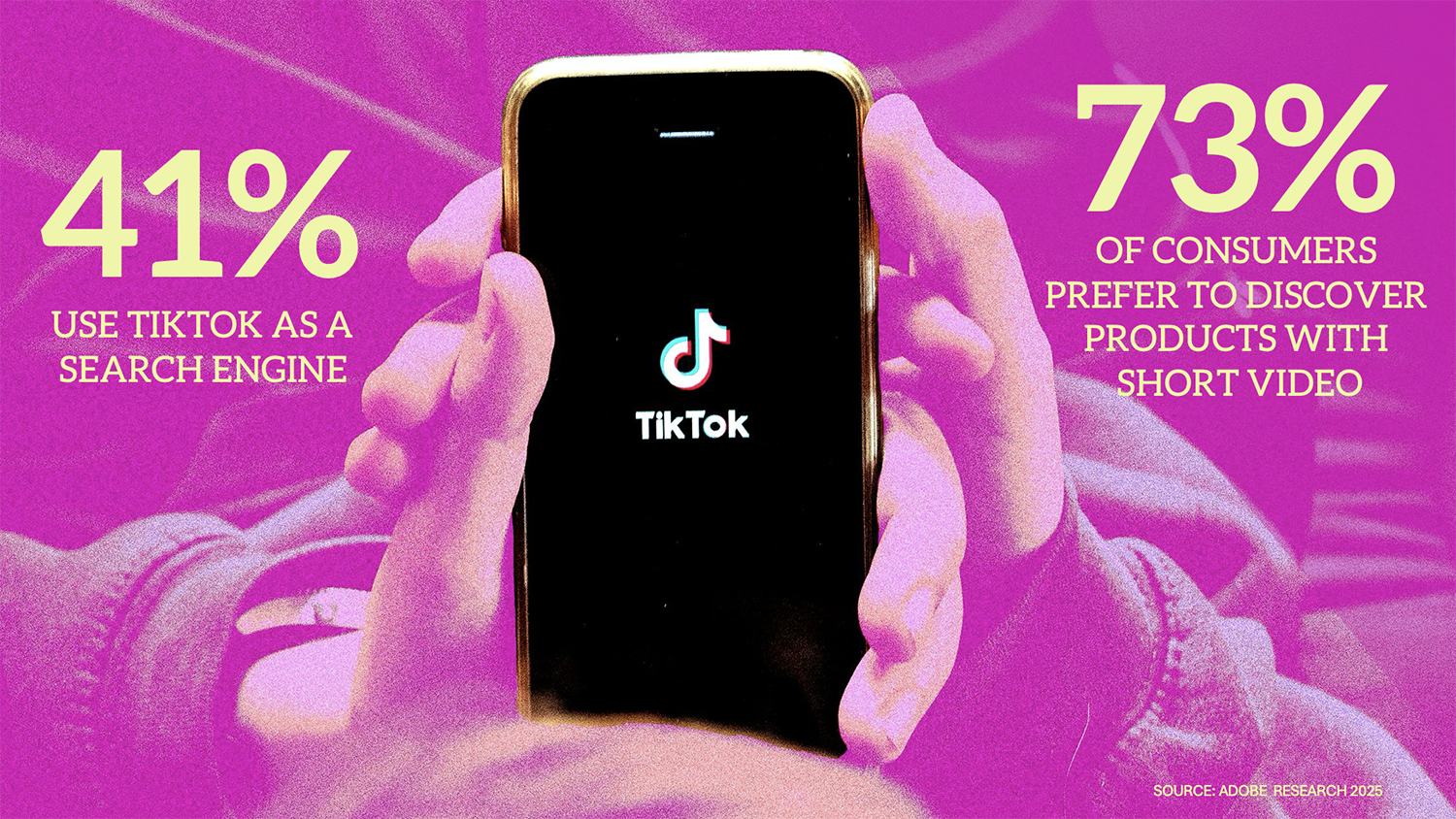
The rise of short form vertical video has signaled a shift in consumer preference. More than 73% of consumers prefer to discover new products and services through short video now. This data suggests consumers desire a more personal connection in w=how they engage with brands.
Additionally, more than 41% of TikTok users say they use the platform as a search engine. Short video on social is quietly replacing the ten blue links of Google searches as the primary channel for discovery and this trend only figures to grow with AI mode and other chat-based platforms increasing in popularity.
If you're not showing up with craveable content where people scroll, you're invisible.
Bottom Line: You need to build external channels that catch attention fast, then convert that attention into traffic and sales.
If your menu isn’t craveable, your marketing doesn’t stand a chance. If your prices don’t feel like a smart choice, you’ll lose the sale. And if you’re not thinking in visuals, social trends, and AI tools, you’ll be outrun by competitors who are.
But the opportunity? It’s massive.
From simple value menus to rainbow drinks to snack wrap battles, foodservice is evolving fast—and your brand can lead the way.
Need help crafting craveable menus, marketing, or LTO strategy?
Let’s talk about how we can make your brand stand out in the most competitive era of foodservice.

